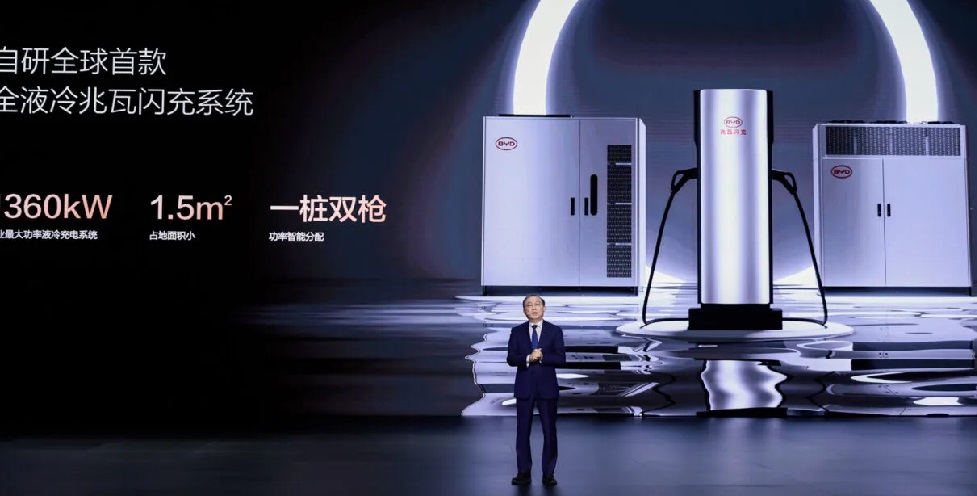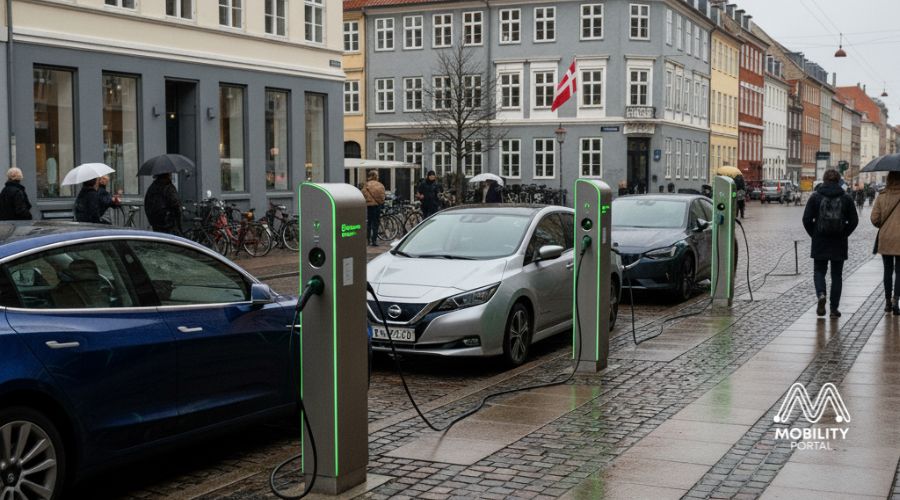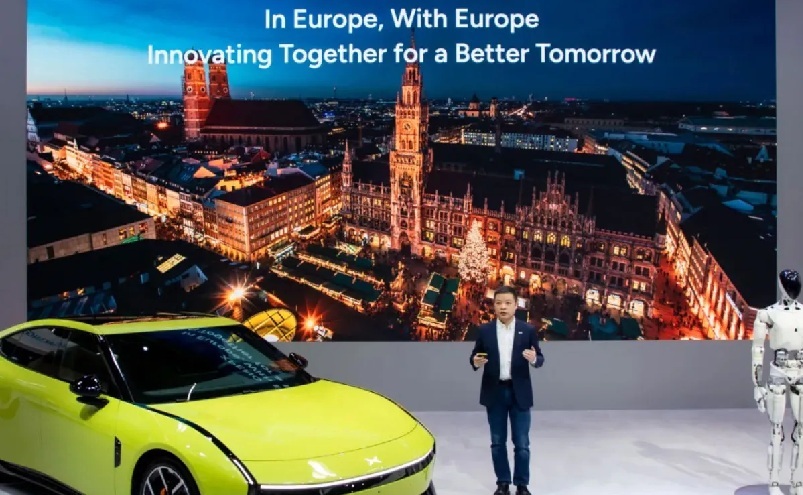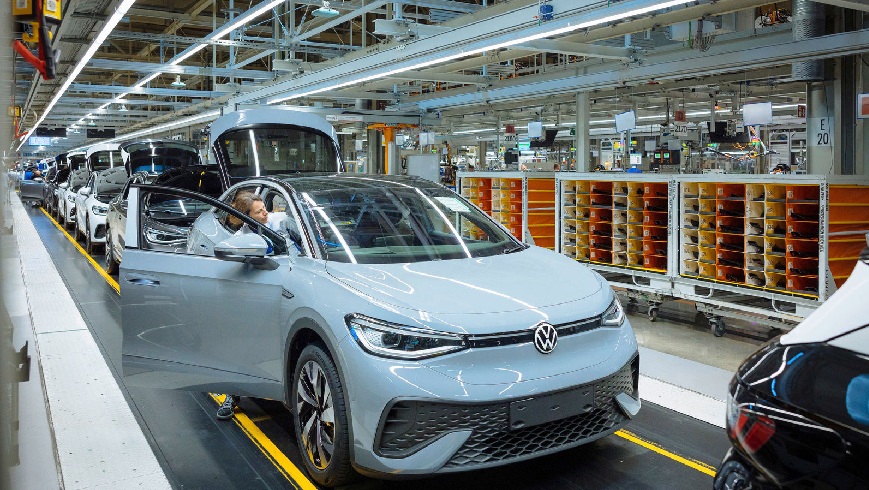BYD‘s first ultrafast charging stations with charging power of up to one megawatt (1,000 kilowatts) will be ready for use next month, following the announcement of the technology last week.
The layout of 4,000 of these charging stations is underway, and the first batch of about 500 will be ready for use when the Han L sedan and Tang L SUV (sport utility vehicle) are launched in early April, Li Yunfei, general manager of brand and public relations at BYD, said.
BYD unveiled the supercharger on March 17, saying it can add two kilometers of range to an EV in one second, or 400 kilometers in five minutes.
The charger’s charging power is twice the 500 kilowatts peak power of Tesla’s latest V4 supercharger.
BYD said at the time that it plans to build more than 4,000 of these facilities, but did not mention a specific timetable.
The company will attach energy storage facilities to the charging stations with such superchargers, so that the 1,000-kW charging power can be achieved even in areas with insufficient power capacity.
Han L and Tang L started pre-sales at the same launch event, and BYD said at the time that the official launch of the two models would be in early April.
“Some time ago we released the BYD Super e-Platform, which contains nearly 11 world firsts such as one megawatt flash charging, a motor with up to 30,000 rpm, and high-voltage silicon carbide module,” Li stated.
However, due to the fact that the technology is so advanced, many people don’t believe that they are real, Li added.
BYD’s style has always been to mass-produce new technologies as soon as they are released, Li said, and invited doubters to come and experience the first 1,000 kilowatts flash charging station when they go online.
He also hinted that BYD’s new technology will not have a major impact on other charging methods.
Whether it’s supercharging, one megawatt flash charging, or battery swap, the strategies of different players are different, but the general direction is the same: all of them are promoting new energy vehicles (NEVs), Li indicated.
“In some technologies, BYD is currently leading, but it is possible that in time, it will be surpassed by other companies with even better technologies, which is a good thing!” he said.
The road to electrification and intelligence is wide, and companies with good technology and products can all be accommodated by the market, Li said.
To achieve a charging power of 1 MW, the vehicle needs to use BYD’s latest blade battery.
BYD calls the battery a flash charging battery, saying it has a 10 C charging rate, which is currently the highest for mass-produced power batteries in the world.
C is the battery’s charging rate, and 10 C theoretically means that the battery can be fully charged in one-tenth of an hour (six minutes).
The automaker said it has redesigned the blade battery to allow faster ion transport in the electrolyte and less resistance through the separator, thereby achieving faster charging.
The battery supports charging voltages of up to 1,000 V and charging currents of up to 1,000 A, which allows charging power of 1,000 kW, both of which are the highest in the world, according to the company.
BYD’s Super e-Platform uses redesigned blade batteries and supports a charging multiplier of up to 10 C.
Source: cvEVpost
READ MORE
-
Affordable and reliable charging: Denmark’s two “unfinished tasks”
Denmark has already passed the threshold for mass adoption of electric vehicles. However, the eMobility sector warns that public charging remains “too expensive” compared to refuelling with petrol or diesel.
-
XPENG arrives in 5 European countries: Where will its expansion plan begin?
This expansion follows XPENG’s new manufacturing deal with Magna in Austria, enabling local production, avoiding EU tariffs, and boosting its footprint in Europe.
-
Volkswagen to cut production at several German plants amid weak EV demand
Zwickau and Emden have seen low demand for electric vehicles, while Osnabrück is reporting weak sales of the convertibles produced at the plant.









